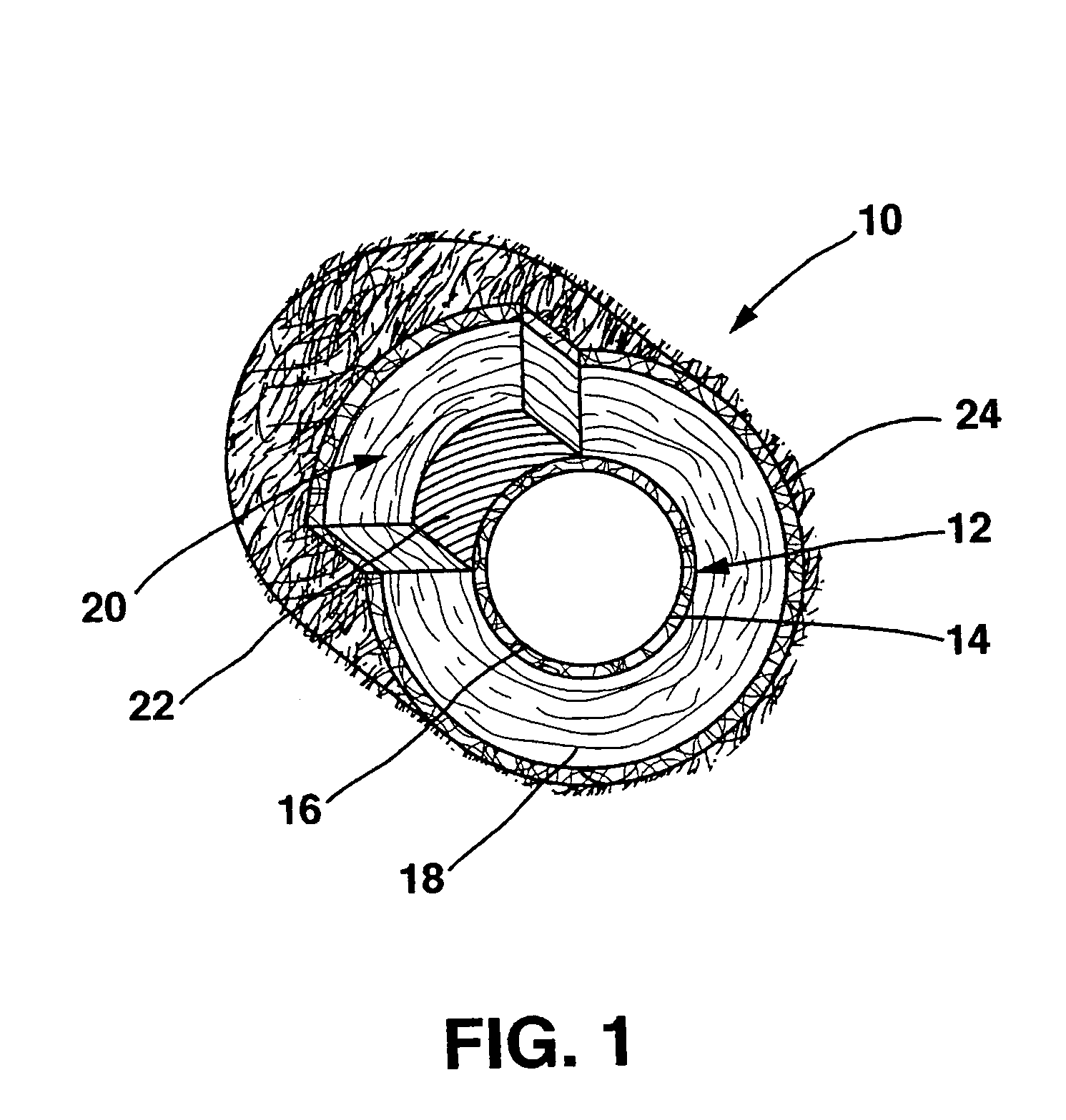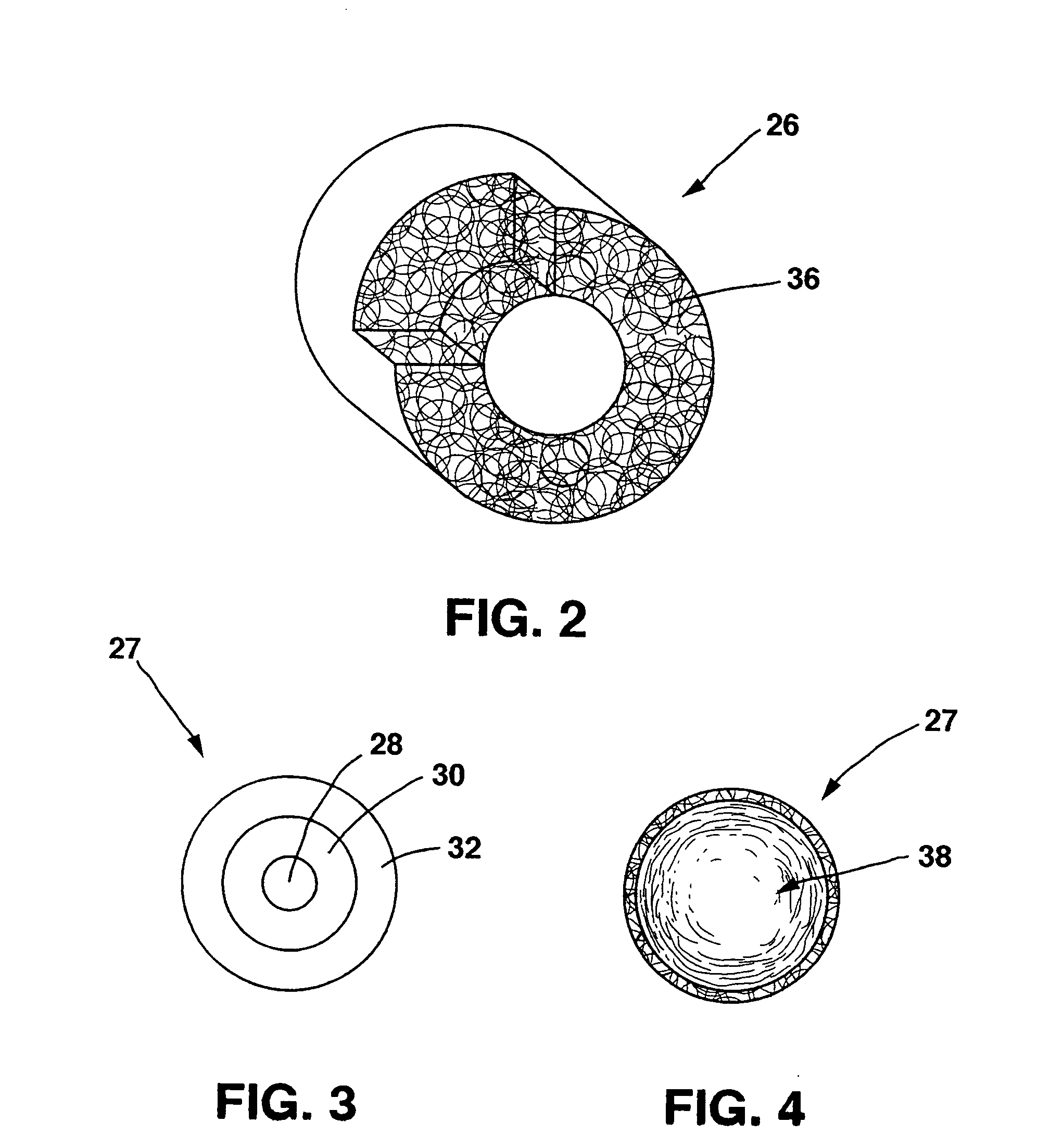Transmural concentric multilayer ingrowth matrix within well-defined porosity
a multi-layer ingrowth matrix and transmural technology, applied in the field of transmural concentric multi-layer ingrowth matrix, can solve the problems of unsatisfactory long-term results, too diseased or unsuitable for use as an implant, adverse effects of medium-diameter arteries on the structure of the arterial wall,
- Summary
- Abstract
- Description
- Claims
- Application Information
AI Technical Summary
Benefits of technology
Problems solved by technology
Method used
Image
Examples
Embodiment Construction
[0020] This invention is directed to an improved prosthetic material having a transmural scaffold (i.e. from the lumenal surface through to the adventitial surface) with a multilayer ingrowth matrix located within either a network of interconnected, helically oriented channels or within uniformly shaped pores (i.e. voids) within the scaffold, or a combination of both channels and pores. Each layer, or gradient, of the matrix is designed to perform a specific function, for example, angiogenesis / endothelial ingrowth can be stimulated within one layer while smooth muscle cell ingrowth is simultaneously stimulated in a second layer. Smooth muscle cell ingrowth generates contractility and can alleviate issues of mismatch of compliance. Further examples of specific functions that can be performed by each layer include facilitation of ingrowth of a particular cell type or release of a particular growth factor.
[0021] In order to promote ingrowth of connective tissue, it is important that m...
PUM
| Property | Measurement | Unit |
|---|---|---|
| diameters | aaaaa | aaaaa |
| diameter | aaaaa | aaaaa |
| diameter | aaaaa | aaaaa |
Abstract
Description
Claims
Application Information
 Login to View More
Login to View More - R&D
- Intellectual Property
- Life Sciences
- Materials
- Tech Scout
- Unparalleled Data Quality
- Higher Quality Content
- 60% Fewer Hallucinations
Browse by: Latest US Patents, China's latest patents, Technical Efficacy Thesaurus, Application Domain, Technology Topic, Popular Technical Reports.
© 2025 PatSnap. All rights reserved.Legal|Privacy policy|Modern Slavery Act Transparency Statement|Sitemap|About US| Contact US: help@patsnap.com



